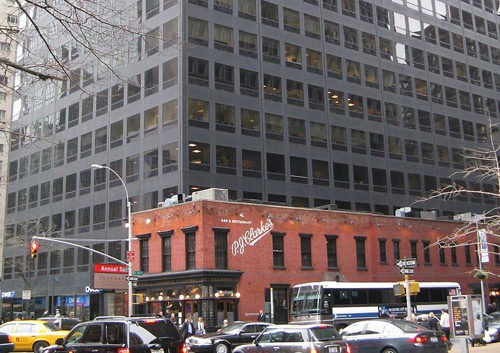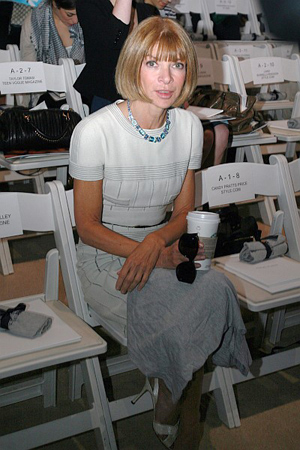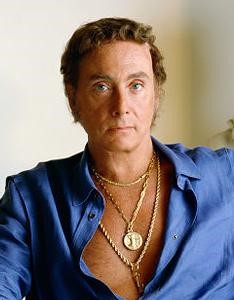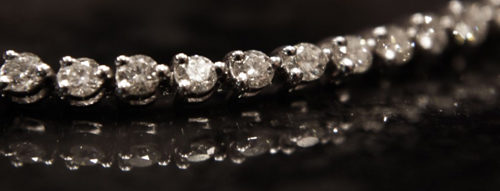North Country Girl: Chapter 62 — Diamonds are a Secretary’s Best Friend
For more about Gay Haubner’s life in the North Country, read the other chapters in her serialized memoir.
My role as a replacement for Shonna Lynne, April’s Pet of the Month, at a Penthouse-sponsored race in upstate New York, was not my shining hour. Cy Preston, the Pet wrangler and an honest PR guy, was as good as his word; Miss Keeton never found out that I was a complete failure as a fake Pet, looking more like a drowned rat. But by Monday, the day after the race, the office rumor mill was already in motion.
“You posed as a Pet?” Debby Dichter took time out from her daily melt-downs over late copy and art and ads to interrogate me at my desk, while I compulsively scratched the hives on my neck; I had spent my day at the races inside the Penthouse hospitality tent, seeing how many shrimp I could eat. “I can’t believe it,” she chided.
I could see any hope for a promotion to the editorial staff evaporating. Every Viva editor was a feminist of some ilk, from Stephanie Coombs, who had bravely outed the sexual predator and former managing editor, Bernie Exeter, and moved up the editorial masthead; all the way to the fierce Martha Lorini, the fiction editor who smuggled stories by Gail Godwin, Doris Lessing, Renata Adler, and other fire-breathing authors into Viva. All of them clung firmly to their feminist credentials, despite the fact that their salaries were paid by a blatant exploiter of women. The Viva editors were a coven of tough, intelligent women I admired and longed to be part of, a group who dismissed me as a lightweight.
I managed to keep Debby as a friend and supporter after I took her out for a drink after work and told her the whole sad, soggy tale. She commiserated for thirty seconds before launching into her usual complaints about the impossibility of ever getting Viva to the printers on deadline.
“Even if the editorial is all in, even if the ad saleswomen finally give up hope that General Mills is going to take out a full-page ad for Cheerios, everything comes to a screeching halt at the art department. Effing Rowan.”
Rowan Johnson, the always drunken or drugged up (it was impossible to tell the difference, so deeply did he plunge into altered states) and preternaturally talented Viva art director, was, like Kathy Keeton, from South Africa. They had bonded over their shared homeland back in the London offices of Penthouse, even though they differed on apartheid. Kathy was completely for it: there was not a single black employee at Viva or Penthouse, and when Bishop Desmond Tutu won the Nobel Peace Prize, Kathy dispatched reporters to South Africa to “dig up the dirt on that Kaffir.”
Rowan also saved the day when Kathy, reviewing the layouts of an already insanely late issue of Viva, discovered that Eartha Kitt, who was profiled in that issue, was black. The shriek that Kathy Keeton let out when she saw the full-page photo of Miss Kitt (who insisted on the “Miss” honorific for herself every bit as much as Miss Keeton did) sent most of the editorial staff off to hide in the ladies’ room. Rowan was summoned to explain to Kathy how this horrid thing had happened and to make it go away. Thankfully this occurred early enough in the day that Rowan was able to string a few words together coherently and he managed to talk Kathy down. He had done some of his best work on Eartha Kitt’s photos and the layout and didn’t want to have to create something entirely new two weeks after the issue was due at the printer.
Despite Rowan’s belief in equal rights, Kathy adored him. She herself had brought him over from London to work at Viva.
I use the word “work” with reservations, as Rowan usually got to the office at eleven, went to lunch at one, and came back at four completely incapacitated. It had been whispered that Rowan came into work one weekend a month with a goodly supply of cocaine and laid out an entire issue of Viva in two days.
The biggest responsibilities of my secretarial days were 1) to immediately notify Kathy when the phone rang and a nasal voice said, “I have Mr. Guccione for Miss Keeton,” and 2) to keep track of Rowan. Kathy Keeton would be bored or lonely, or she decided that she hated a photo or illustration and it had to be redone immediately, or she’d want Rowan to help her pick out a new piece of jewelry, or she would have heard from Debby Dichter that it was now costing a thousand dollars a day to hold the printing presses past Viva’s absolute last deadline.
“Gay, get me Rowan,” she ordered. A phone call to the art department did not work; anyone who answered automatically said, “Rowan’s not here” and hung up. I had to hunt him down like a big game trapper after a wily creature. If I was very unlucky, he would be in his office with the door locked. I’d slip a note under the door, knocking and yelling, “Rowan! Miss Keeton wants you!” (never a response), beg the art staff to tell Rowan to stop ingesting or injecting whatever and come down to the other end of the office, and was then forced to dawdle about the halls, not wanting to face the wrath of Kathy by coming back empty-handed.
Between one and four, I knew where to find Rowan: across the street at P.J. Clarke’s, a single-story speakeasy left over from the 1920s that stubbornly hunkered among Third Avenue’s glass and steel skyscrapers. It had bare bones décor, a famous hamburger, strong drinks, and red-nosed, craggy faced bartenders who did buy backs every third cocktail. I’d walk into the bar, which reeked of spilled beer, cigarette smoke, and charred beef, and find Rowan wobbling on a stool, drinking his lunch. The task of removing Rowan from that barstool was made even harder because I felt so sorry for myself: I had no work friends to have a Clarke’s burger and Bloody Mary with. My only pal, Debby Dichter, chowed down a sandwich at her desk so she could get back to haranguing the Viva staff.

If I was very lucky, I would find Rowan mooning after Anna Wintour, the fashion editor. She too spent a lot of time behind her locked door; Rowan would linger outside her office, hoping for a glimpse or a word with his idol. Anna, however, looked at him as she did everyone around her: as if he were something on the bottom of her Charles Jourdan shoes. Even Kathy, whose own looks could curdle milk, was intimidated by Anna. It was all I could do to not tug on my forelock when Anna sauntered past me and into Kathy’s office, never waiting for an invitation, to demand more money to hire pricey photographers and ship them and half a dozen models (as well as Anna and her long-suffering assistant) to an exotic locale half way around the world. Kathy always gave in, forcing Viva even deeper into the red, in the forlorn and ludicrous belief that the Vogue and Harper’s Bazaar advertisers, Revlon and Dior and Blackglama, or even the humble L’Eggs panty hose, might be fooled into buying ads in the former penis magazine.

When not hunting down Kathy or Rowan, I sat in my fishbowl and willed the phone not to ring. The idiot at the switchboard refused to screen incoming calls or even ask the caller’s name or business. I would answer the phone “Miss Keeton”s office,” and there would be the heavy breathing noises of a weirdo or some guy with an urgent message for a Pet. I have no idea why I wasn’t allowed hang up; so what if Penthouse lost a reader, there were still 4,999,999 men plopping down their $1.50 for the magazine each month.
Along with her official titles of Viva Publisher and Penthouse Associate Publisher, Kathy also served as the Pet Closer. Every month or so, a shy, scared girl with enormous breasts and a pretty face would show up: “Um, ah, um, I have an appointment? With Miss Keeton?” I escorted the new meat into Kathy’s presence; she was no longer Ice Queen; she was now Benevolent Older Sister.
“Gay, we’d like some tea,” she ordered, not bothering to remember the girl’s name as she patted the cushion of the love seat, encouraging the terrified girl to sit next to her. I steeped and poured and set out sugar cubes and fetched milk from the dorm fridge that shared my fishbowl and eavesdropped on Kathy’s spiel.
These were the only times Kathy alluded to her own humble beginnings at Penthouse, in photos of her wearing nothing but ballet toe shoes. No one else was allowed to mention this and all copies of the issue of British Penthouse Kathy appeared in had mysteriously vanished.
Kathy’s job was to convince this 19-or 20-year old rube that the best thing she could do for her modeling/acting career was to spread her legs as far apart as possible for Bob Guccione’s camera. Pimps at the Port Authority Bus Station could have learned persuasive techniques at Kathy’s knee.
“Look at me,” Kathy confided, leaning in a bit closer to her victim. “I was a poor, struggling ballet student. I never dreamed of having a mansion, a limo, all of this” — indicating her gilded boudoir of an office with a heavily jeweled hand. Despite the fact that Marilyn Monroe was the last actress to launch her career through porn, way back in 1953, Kathy convinced these poor girls that showing off their gynecological goodies was the first step on the road to Hollywood stardom.
In the end, the girls fumbled around with their dainty china teacup, thanked Miss Keeton, and dutifully headed over to the House to be photographed by Bob Guccione.

It was hard not to be impressed with Miss Keeton’s gold and gems; I learned that the rings and bracelets and earrings she sported could be categorized by Sotheby’s auction house as “Important Jewels.” These pieces might have been tasteful if worn individually; Kathy piled them on and glittered like a disco ball.
Miss Keeton did not patronize Sotheby’s or Tiffany or Bulgari. Her jeweler came to her. He was an elderly small gentleman in a worn black suit, burdened with an oversized attaché case, Old World gracious and soft-spoken. Behind his Coke-bottle-thick rimless glasses his watery blue eyes still flashed the occasional glint, like the star in a sapphire.
I lingered over the tea-making and paper-gathering to ogle at what was in the jeweler’s case. After bowing to Kathy, the jeweler spread a jet black swath of velvet on top of the French Provincial coffee table. He intoned “24 karat,” “platinum setting,” “rare South Sea pearls,” “Burmese rubies,” like the words of a prayer, and gently set down each jewel as if he were placing gaudy constellations in a night sky: lion head door knocker earrings, the lions’ eyes round-cut emeralds; a gem-encrusted medallion with a heavy gold chain that would inspire envy in Kanye; a tennis bracelet, a string of chickpea-sized diamonds that would have blinded an opponent on the other side of the net; and rings with such gargantuan center stones they could double as knuckledusters. Kathy’s office was transformed into Aladdin’s cave.

Kathy dismissed me with a wave of her hand, but through her open office door I watched her try each piece on, while the jeweler murmured his approval. She took most of them, although no money or jewelry changed hands, usually adding an order for another gold chain for Bob or for one of the Rhodesian Ridgebacks.
The jeweler packed up his case, kissed Kathy’s hand, and came out to thank me with a handshake as soft as a cat’s paw. Kathy left an hour later without a word to me; I knew my duties. I turned on the forbidden overhead lights in Kathy’s office to ensure that when I was done everything was pristine for her start the next morning: no loose paper, no forgotten tea cup, making sure that her Mont Blanc pen, Virginia Slims, and a sparkling clean crystal ashtray were the only things on her desk. Under the glaring fluorescent lights, I saw a twinkling in the white shag carpet.
It was the tennis bracelet. This was a new concept to me — sports jewelry! — and I was enamored. I draped the bracelet over my left arm and grappled with the clasp, which was beyond my uncoordinated fingers. It was a bracelet a lover should put on you, finishing with a kiss on the pulse of your wrist.
I have a larcenous soul. I had boosted my sophomore year wardrobe from the clothing store I worked at, as did every other salesclerk (and probably the mail man and the meter maid); stealing seemed to be employee policy. And even unclasped, the bracelet looked so pretty on me.
But like so many mysteries from that time, I don’t know why it never occurred to me to keep the tennis bracelet. I took it back to my cubicle, dropped it in the top drawer, next to my pencils and paper clips and staple remover. I found the jeweler’s phone number in my Rolodex and called.
“Hello, this is Miss Keeton’s office. Could you please tell Mr. Jacobs that he left something here?”
Thirty minutes later, the little man showed up, breathless and red and looking as if he were about to have a heart attack. I sat him down on my chair, put the bracelet in his hand, and rushed to get him a glass of water. When I returned he was mopping his brow with a large handkerchief and slipping the bracelet into his jacket pocket, which did not seem to me the safest place for a just recovered $50,000 piece of jewelry.
It occurred to me later that I was due a small thank you piece of jewelry, maybe half carat diamond studs? I did receive a very nice thank you card from Mr. Jacobs. And that old mensch did me a solid: he called Kathy and told her that I had found and returned a Very Important Piece of Jewelry, especially important as it was one of the items she purchased.
Because of that, in Kathy’s eyes I was now almost a person.